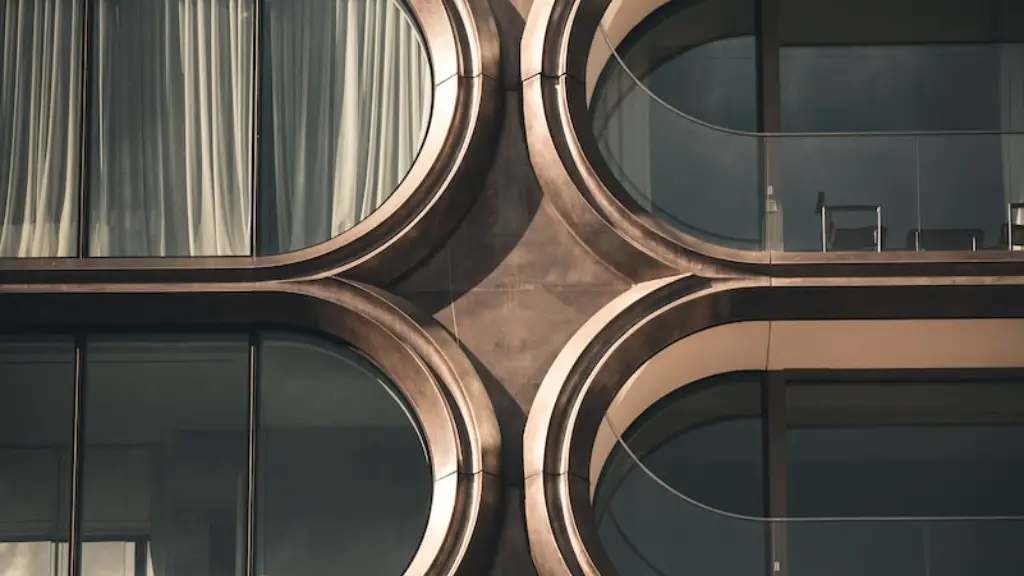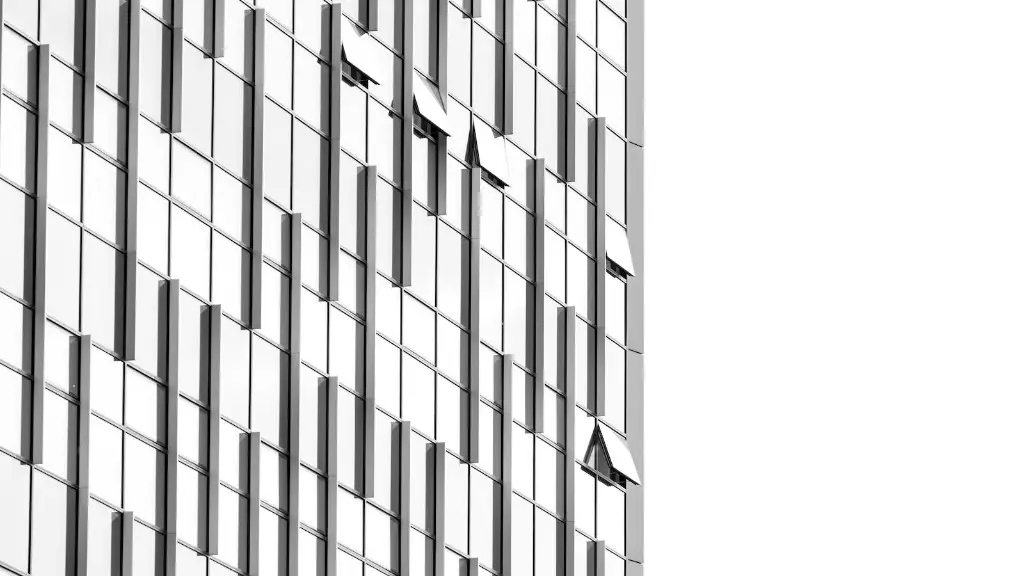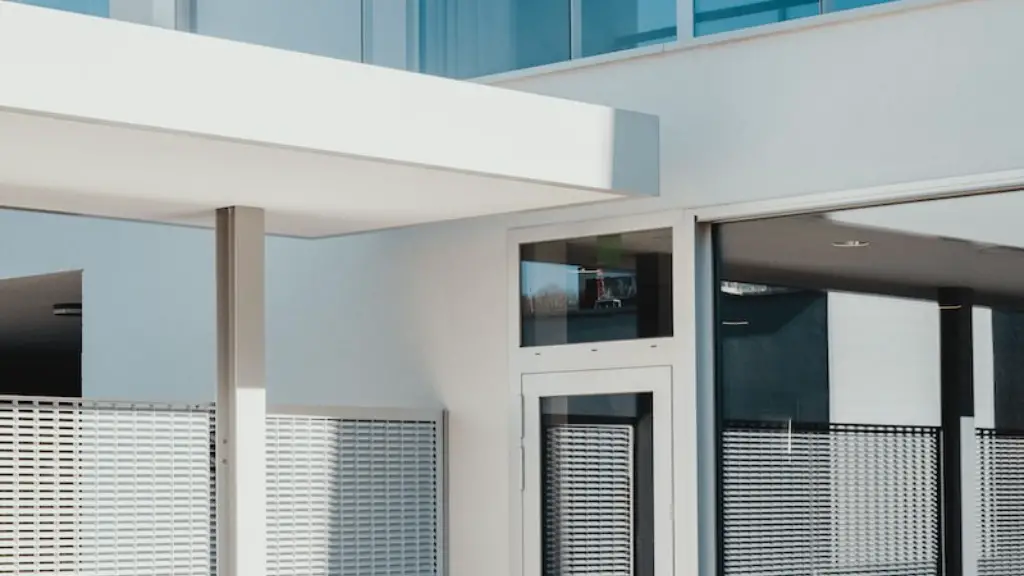Aesthetics plays a major role in the design of any built structure, yet color is oftentimes overlooked. From vibrant walls to accent lighting, color is a powerful tool that can be used to attract attention, set the mood, and promote emotion. It can draw people closer and create a sense of intimacy and comfort in a large space. In architecture, however, the use of color goes beyond providing aesthetic appeal. Color is used to engage, inform, and direct the public, as well as to connect the inside and the outside. By understanding why color is important in architecture, we can use this knowledge to create mesmerizing spaces.
The most basic use of color in architecture is to determine the function of each space. For example, restaurants may use yellow or orange hues to provoke feelings of hunger, while blues and purples may be used to create a calming ambiance. Color can also be used to mark boundaries in large spaces, create visual cues to direct the public, and give focus to a particular area.
Studies have found that color does more than just influence the physical features of a building – it also affects the mental and emotional state of people. According to recent research, different colors can have a positive or negative impact on people depending on the context. For example, blue can be calming, while orange can be energizing.
Colors also have an impact on our perception of space. It is said that shades of warm colors bring areas closer, while cooler colors make an area appear more distant. Therefore, architects must use color to create a perception of depth and dimension to a space. An example of this can be seen in the way color is used to define a floor plan. By using contrasting colors, walls become easier to distinguish from floors and ceilings, making a space appear more organized.
In addition to hue, architects must also consider the value of a color. Value is determined by the lightness or darkness of a color. Light colors make walls appear to move away while darker shades make the walls seem closer. Thus, the careful use of light and dark colors can create a more interesting visual effect in a room.
These are just some examples of how color is used in architecture. While it is possible to create a visually appealing building without color, color can bring more life and character to a space. Color is a powerful tool that can be used to create a unique atmosphere that is both inviting and breathtaking.
Sensory Impact
Colors have the power to influence our brains and affects the way we perceive a space. Different colors have different sensory effects. For instance, red is thought to have a stimulating effect and is used to attract people’s attention. Orange, meanwhile, is usually used to create feelings of warmth and comfort. Greens and blues can also be used to create a calming, soothing atmosphere.
Color can also be used to influence the energy of a space. By carefully combining warm and cool colors, architects can create an energizing atmosphere while still maintaining a sense of balance. This can be done by placing bold, warm hues near lighter, cooler shades.
Beyond a sensory impact, color in architecture can also be used to convey a message. Color theory suggests that certain hues evoke certain emotions, making them useful for representing ideas, such as progress, success, growth, and prosperity. By combining this knowledge with other design elements, architects and designers can create a narrative within a space.
When it comes to color, the possibilities are endless. Through careful experimentation, architects and designers can create stunning spaces that represent their vision, evoke emotion, and influence the public.
Using Color in Combination with Other Elements
Color can be used in different ways and in combination with other elements. Lighting, for example, can be used to enhance the color of walls, floors and ceilings. This can create a unique atmosphere that allows a space to stand out. Similarly, textures can be used to give a wall a more dimensional feel, while shadows and reflections can create interesting visual effects.
Architects must also consider architecture fundamentals when using color. Shape and size, for example, can have an impact on how a color is perceived. A small room painted with a bright hue can appear larger and airier, while a large room with a muted palette can appear more intimate. Similarly, geometric patterns or shapes can be used to add depth and interest to any space.
Finally, when using color in architecture, it is important to consider the purpose of a space. Does the space need to be calming or energizing? Warm or cool? This will help to determine which colors and combinations work best in a particular environment. Color can be used to create atmosphere in commercial buildings, museums, and educational institutions, as well as in private residences.
The Role of Technology
The emergence of computer-aided design has allowed architects to make more precise color choices. By using digital tools, they can now quickly visualize a space with different color palettes and actively experiment with different combinations. This helps to ensure that the right colors are used to achieve the desired effect.
As technology advances, it is likely that architects will have access to even more powerful tools that can help create magnificent designs. For example, augmented reality can be used to explore alternative design concepts in real-time and assess their impact on a space without having to physically build anything.
The use of color can have an impact on any built structure. From large corporate buildings to small homes, color is a powerful tool that can be used to create atmosphere, evoke emotion, and influence the public. Through careful experimentation with color, architects and designers alike can transform ordinary spaces into magnificent works of art.
Material Properties
The use of color in architecture not only affects how a space is perceived, it also impacts other aspects of the building. Paint, for example, can reflect or absorb light, while certain materials can be used to reduce glare or enhance insulation. It is important, therefore, that architects consider these material properties when making color choices.
In addition to this, it is also important to keep in mind the environment of the space. For example, a space facing a lot of sunlight may require lighter colors to reduce the amount of heat that enters the building. Similarly, colors can be used to enhance the look of a particular material. For instance, natural stone walls can be enhanced by using warm, earthy colors that make the material look more vibrant and interesting.
By understanding how color and other elements influence the physical and visual features of a building, architects can use this knowledge to create truly amazing spaces.
Creating Connections
Another important aspect of using color in architecture is to create connections. Colors can be used to link different spaces by creating a visual harmony or to create a visual distinction between two areas. For example, warm colors can be used to create a welcoming atmosphere in a room, while cool colors can create a sense of distance between two different spaces.
Color can also be used to convey a story or to represent an idea. For instance, red may be used to represent danger or progress, while white may be used to represent purity or cleanliness. By carefully selecting colors and other elements, architects can use design to create powerful messages.
Finally, color is used to differentiate different areas within a larger space. This can create different atmospheres in a single room, such as that of a café or a theater. By understanding and utilizing the impact of color on a space, architects can create an engaging atmosphere that encourages people to move around, explore, and interact.
Through the careful use of color, architects and designers can create extraordinary spaces that create memorable experiences for the people that inhabit them. Color is an important tool in architecture, as it not only engages the public but also has a lasting effect on the overall aesthetic of a building.




